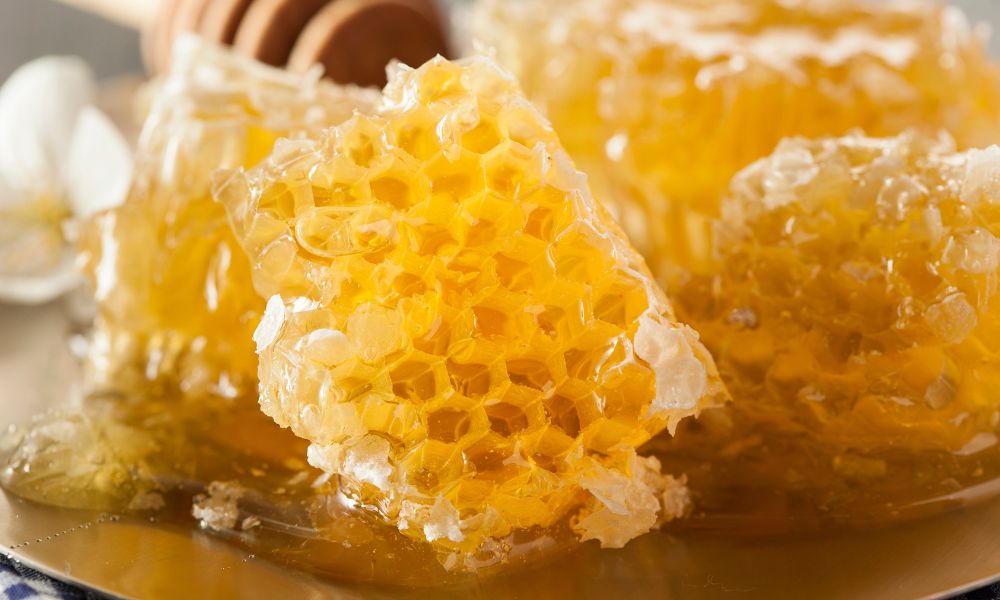It’s easy to look at the honey products on the store shelf and think they’re all the same. However, honey is a diverse natural product with hundreds of varieties, each with its own unique flavor profile and potential health benefits. Raw honey is especially celebrated for its purity, as it’s not pasteurized or processed, leaving its natural enzymes and minerals intact. From the floral notes of acacia honey to the robust flavor of buckwheat honey, there’s a world of taste to explore. Here’s your sweet and complete guide to the different types of raw honey.
The Different Raw Honey Varieties
Acacia Honey
Acacia honey comes from the nectar of the black locust tree, also known as the false acacia. This tree blooms with thousands of white, fragrant flowers that yield honey with a light, almost transparent color. With a mild floral taste and a hint of vanilla, acacia honey is one of the most-sought-after varieties for its delicate flavor. Acacia honey also has a high concentration of fructose, making it a favorable sweetener for those with diabetes. It’s said to be a good antiseptic, and it can assist with digestion.
Manuka Honey
Native to New Zealand, manuka honey comes from the nectar of the manuka bush, a member of the myrtle family. Renowned for its distinctive flavor and potential therapeutic qualities, it has a rich, earthy taste that’s slightly bitter, with complex herbal notes. Manuka honey also has several antibacterial properties and high levels of methylglyoxal, making it a great natural healing agent—it’s a good option for use in wound care and sore-throat remedies.
Clover Honey
One of the most common types of honey, clover honey is the mild, sweet honey you find most often at the grocery store. It comes from the white clover plant that’s widespread across North America. With a pleasing, light, slightly floral taste, clover honey is an all-purpose sweetener and a great addition to tea or baked goods. It also has some calming effects on the body when used in drinks, making it a comforting choice for people looking to relax.
Buckwheat Honey
Buckwheat honey is made from the nectar of the buckwheat flower, which is incredibly small. Therefore, bees need to collect pollen from significantly more buckwheat flowers to make a usable amount of honey for their hives.
Strong molasses and malty flavors give this honey a robust, pungent, sometimes bitter taste. It makes a striking contrast to the typical lighter honeys you might be familiar with. Additionally, buckwheat honey can soothe coughs and sore throats, even more so than over-the-counter medicines. It’s rich in iron and antioxidants, making it beneficial for overall health.
Orange-Blossom Honey
Orange-blossom honey is a variety of honey made by bees who feast on orange blossoms. This yields honey with a citrusy hint and a wisp of the flowers’ aroma—light, slightly fruity, and a bit of the tropics in a jar. Its citrus undertones can vary from a mere hint to a full orange-zest taste, depending on the bees’ primary nectar source. Orange-blossom honey has health properties similar to those of other types of raw honey, with the added joy of a vitamin C boost.
Wildflower Honey
Often a catch-all term for honey made from the nectar of a variety of flowers, wildflower honey can vary greatly in taste and color, depending on the season and the region it comes from. Think of wildflower honey as a snapshot of the local flora. It can range from light and sweet in the spring to dark and robust in the autumn, often with complex, earthy undertones. Since it’s a mix of different nectars, wildflower honey may provide a broader spectrum of health benefits compared to single-source varieties. This can include anything from boosting your immune system to potentially alleviating allergies to local flora.
Choosing the Right Honey for Your Tastes
This guide to the different types of raw honey wouldn’t be complete though without discussing how to choose the right one for your needs. The type of honey you choose should depend on your palate and what you plan to use the honey for. Are you a fan of milder, more delicate flavors, or do you prefer honey with a bolder kick? Do you want to sweeten delicate desserts or add depth to a savory dish? Here are some general tips for selecting the right honey for you:
Match It to the Meal
Just as with wine, certain honeys can complement different foods. Light honeys such as acacia pair well with fresh fruits, while the deeper notes of buckwheat honey can stand up to strong cheeses or hearty main courses. So carefully consider what meals you’re looking to create to find a flavor profile that will complement it. You may need to try a few different types of honey to determine the perfect match.
Consider the Application
If you’re using honey in cooking or baking, the flavor will be more subtle than if you’re drizzling it over yogurt or toast. Choose a honey that can hold its own against the other ingredients and still provide that added sweetness and depth of flavor you’re looking for. Generally, you can use wildflower honey for everything. But varieties with more unique flavors, such as clover or orange blossom, might be better for consuming as is.
Explore Options Directly From the Beekeepers
If you want to experience the true spectrum of honey flavors, make sure you buy your honey from beekeepers. In a farmers-market setting, beekeepers can provide insight into their bees’ nectar sources and the unique characteristics of their honeys. Additionally, some brands, such as Bell Honey, pride themselves on shipping their products directly from the beekeepers. This is one of the best ways to guarantee you’re getting something fresh and packed full of natural flavors.
Make Sure You’re Buying Unfiltered Honey
It’s also crucial that you double-check whether the honey you’re buying has undergone a filtering or pasteurization process. Unfiltered honey is the closest you can get to straight-from-the-hive goodness. It’s raw and unprocessed, meaning it has all the enzymes that make honey a superfood. So if you see jars with the words “pasteurized” or “filtered” on them, the chances are good that you don’t want them.
Each type of honey brings something unique to the table, from the floral notes of acacia to the robust earthiness of buckwheat. Therefore, understanding the varieties available can enhance your culinary experiences. As a pure honey supplier, Bell Honey has a team of talented beekeepers that work hard to produce products of superior quality. Whether you’re interested in wildflower honey or the more unique taste of clover honey, we have just what you’re looking for.


